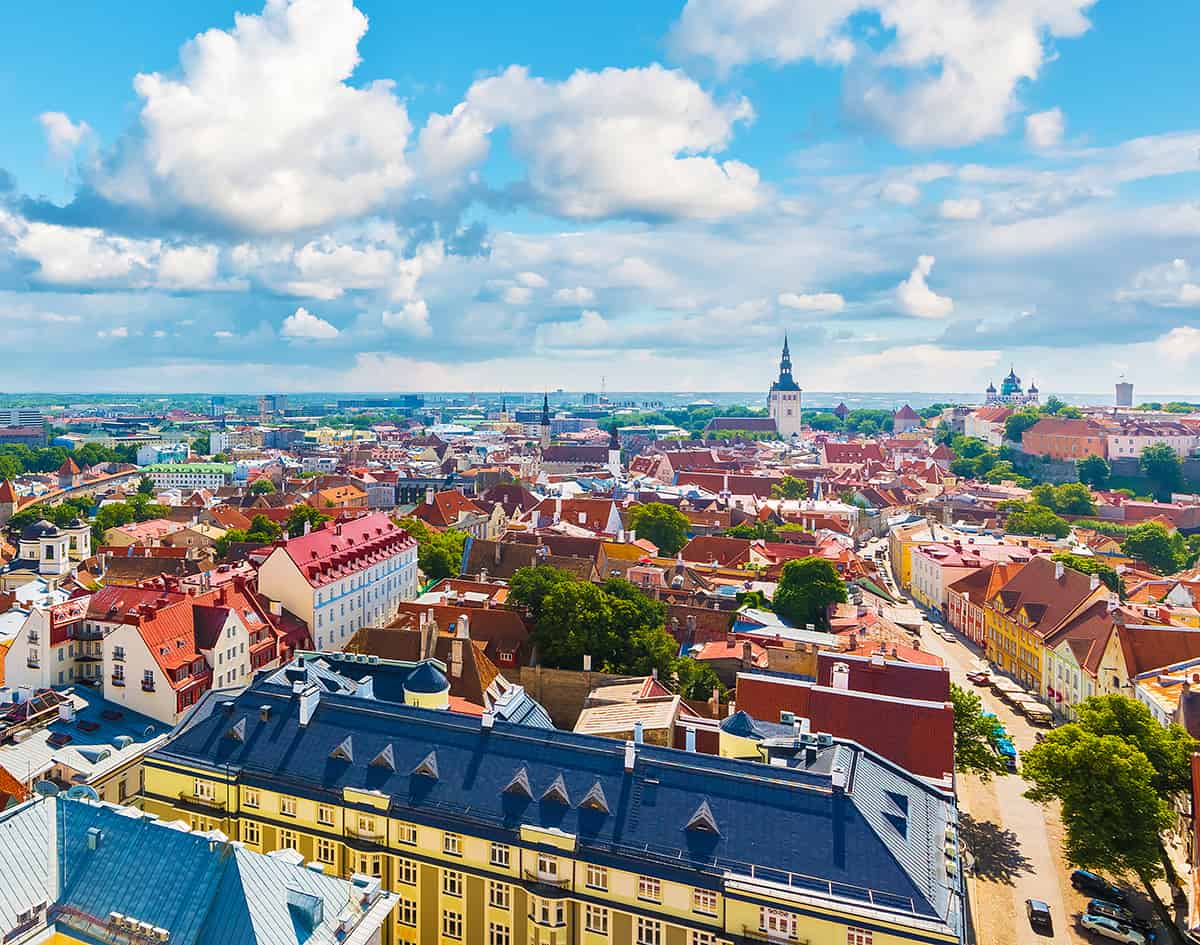Attractive Taxation
The Kallas administration aims to simplify the tax codes and create a more business-friendly and competitive environment. For companies, the reform will reduce time spent on complying with tax rules, and it will provide benefits for enterprises that do not pay corporate income tax on reinvested and retained profits.
The country applies a corporate income tax rate of 14% to 20% on distributed profits. Under the government’s tax reform, a unified 22% tax rate will be levied on distributed profits starting in January 2025.
The country’s tax system lets companies reinvest their profits tax-free while using capital and earnings to grow businesses faster and with a lower cost burden. The present rate of personal income tax is set at 20%. This will rise to 22% in January 2025.
In Estonia, property tax applies only to the land’s value rather than to the value of real estate or capital. Generally, Estonia exempts 100% of a company’s foreign-earned profits from domestic taxes provided it is headquartered in, or has a subsidiary registered in, the country.
Growing Green
In its National Recovery and Resilience Plan, the Kallas government has identified sustainable energy and green-transition technologies (greentech) as prime areas for investment and development. International companies are attracted by Estonia’s ability to tap into the EU’s European Just Transition Fund (EJTF) and other regional funds.
Neo Performance Materials, a Canada-based producer of industrial rare earth magnetic metals, alloys, and powders, is building a €100 million factory in the northeastern city of Narva. The EJTF will fund around €19 million, which will help supply magnets to manufacturers of electric vehicles and wind turbines.
Estonia’s long-term plan to establish a major greentech hub has also attracted the attention of Hastings Technology Metals. The Australian group is collaborating with the state-run Estonian Investment Agency (EIA) to develop a rare earth hydrometallurgical plant in Estonia’s northeastern Ida-Viru County.
“The establishment of such a plant would help to further develop the value chain of permanent magnets and electrification that is already operating here and would support Estonia’s and the European Union’s ambition to achieve climate neutrality,” said Joonas Vänto, head of the Estonian Investment Agency (Invest Estonia), on the organization’s website. “Currently, there is no sustainable permanent magnet production capacity in the EU to support the increased demand for wind turbines, electric cars, robotics and more.”
Boosting Defense
Estonia’s fledgling defense sector contributed little to the national economy since the country’s independence. Nonetheless, this all changed in 2020, when the government started to develop a Smart Defense sector—in line with NATO’s Smart Defense initiative, a collaborative effort to increase the member states’ capabilities and their ability to operate efficiently together.
The country’s defense industry generated $220 million in 2020, with 35% of production exported. In 2023, turnover reached $320 million, with 60% of production going to export markets.
The Ukrainian War has accelerated defense production and revenue. The war generated widespread panic among the Baltics, despite being NATO members.
The universal concern among the NATO allies is that Russia could seek to militarily reclaim territories it lost in the breakup of the Soviet Union.
International interest has developed around the government-backed defense building program. In February 2023, Edge Group, a defense conglomerate based in the United Arab Emirates, acquired a 50% ownership in Estonia’s defense industry flagship company Milrem Robotics, Europe’s leading developer of robotics and autonomous systems.
The expansion of Estonia’s Smart Defense industry also has opened international markets for Marduk, a producer of electrooptical anti-drone platforms used by Ukraine’s armed forces.
“We are building expertise in Estonia and experiencing strong growth in the face of new market opportunities overseas,” says Leet Rauno Lember, Marduk’s chief operating officer.
A Digital-Innovation Dynamic
As one of Europe’s most digitalized countries, Estonia continues to strengthen its tech ecosystem. Its small-to-midsize tech sector raised a record $85 million from early-stage funding rounds in 2023.
The EIA estimates that the country has 2.3 fintech unicorns per million per capita, which is punching above its weight.
State programs promote digital innovation and invest in specialized IT-centric university programs, emphasizing areas such as blockchain, big data analytics, AI, cybersecurity, automation, robotics and open-source computing.
Demand for top-skilled graduate talent active in digital asset exchange, digital lending, enterprise technology provisioning, digital payments, wealth management, and digital capital raising is projected to increase dramatically by 2030. Estonia’s fintech sector grew to 310 companies in 2023 from 264 companies in 2022.
“Estonia has solid foundation structures and a clear outlook to ensure the country remains an attractive choice for tech investors everywhere. Our national development strategy, particularly the Digital Agenda 2030, sets out an ambitious plan to advance digital literacy, cybersecurity, and public e-services,” says EIA’s Vänto.
The Digital Agenda 2030 strategy is joined to far-reaching research and development (R&D) programs and is expected to establish 500 deep-tech startups. The government anticipates that state-led R&D funding, as a share of GDP, will surpass 1% by 2035.
